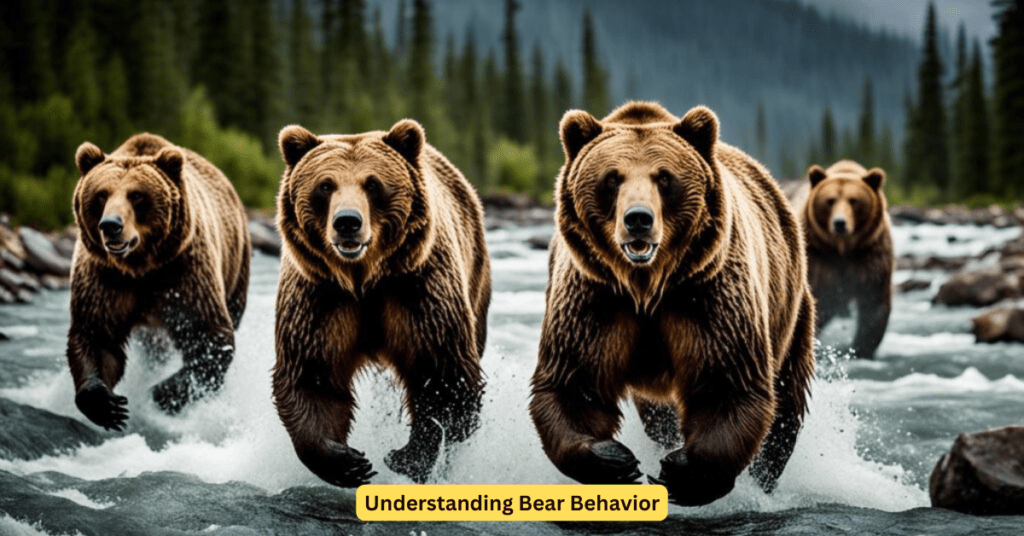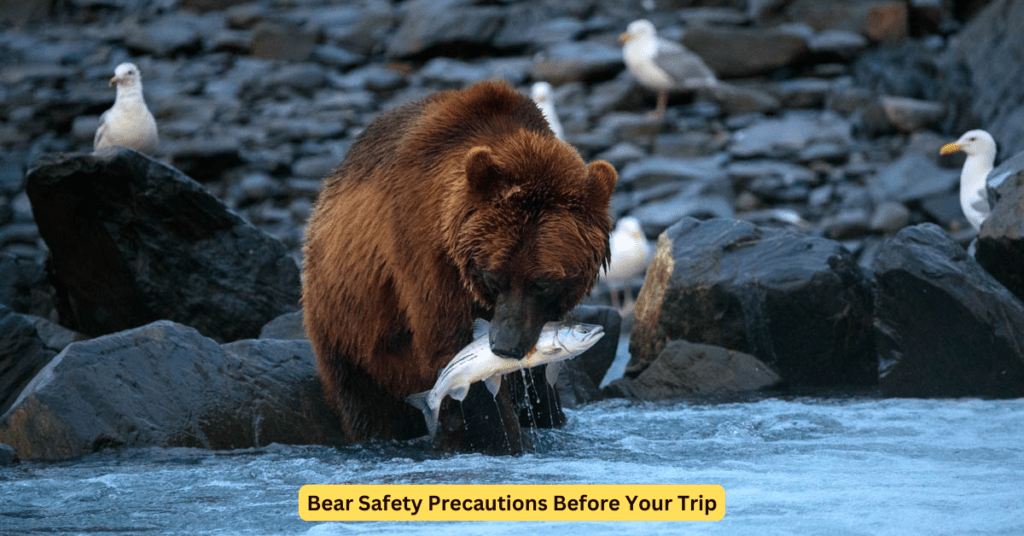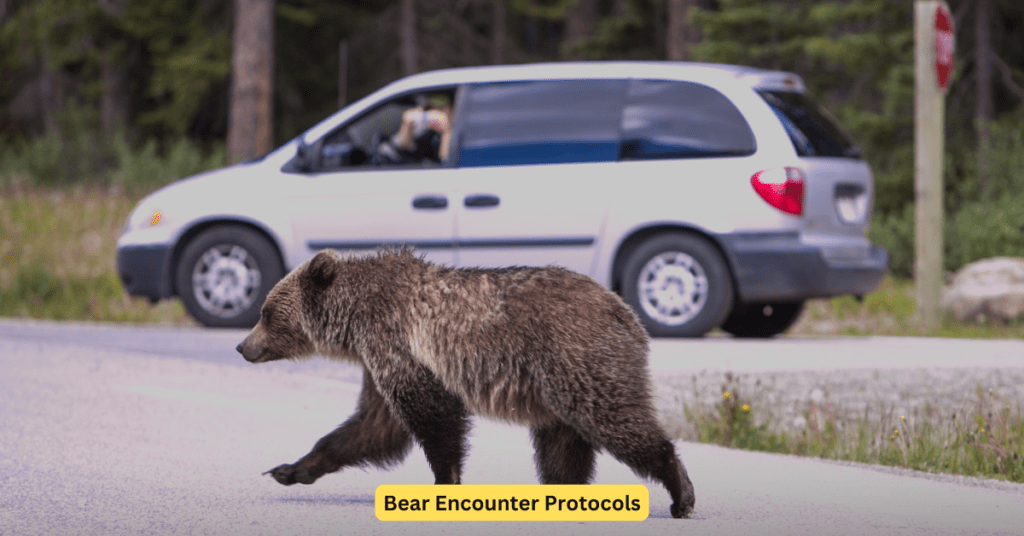Introduction
Backpacking in bear country offers adventurers an unparalleled experience of the great outdoors, but it also comes with inherent risks. Encountering a bear while hiking or camping can be a thrilling yet potentially dangerous situation. Whether you’re an experienced backpacker or a novice outdoor enthusiast, being prepared and knowledgeable about bear safety precautions is crucial for ensuring a safe and enjoyable trip.
In this comprehensive guide, we will delve into the essential safety measures and precautions to take when backpacking in bear country. From understanding bear behavior to proper food storage techniques, we will equip you with the knowledge and skills necessary to minimize the risk of bear encounters and ensure your safety in the wilderness.
Understanding Bear Behavior

Before embarking on a backpacking trip in bear country, it’s essential to have a solid understanding of bear behavior. Bears are intelligent and curious creatures, and knowing how they think and behave can help you avoid potentially dangerous situations.
Types of Bears
There are three main species of bears found in North America: black bears, grizzly bears (also known as brown bears), and polar bears. Each species has its own unique characteristics and behaviors, and understanding these differences is key to effectively managing encounters.
Bear Habitats and Territories
Bears inhabit a wide range of habitats, including forests, mountains, and tundra. They establish territories where they forage for food and raise their young. Understanding bear habitats and territories can help you identify areas where bear encounters are more likely to occur, allowing you to take appropriate precautions.
Bear Behavior Cues
Bears exhibit various behaviors that can indicate their mood or intentions. Understanding these behavioral cues can help you assess the situation and respond appropriately. Some common bear behaviors include:
- Eating: Bears may be focused on foraging for food, especially during the spring and summer months when food sources are abundant.
- Aggression: Aggressive behavior, such as growling, snarling, or swatting, indicates that a bear feels threatened or is defending its territory or cubs.
- Defensive Posture: A bear may adopt a defensive posture by standing on its hind legs to get a better view of its surroundings or assert dominance.
.
Bear Safety Precautions Before Your Trip

Proper preparation is key to staying safe while backpacking in bear country. Taking precautionary measures before your trip can help minimize the risk of bear encounters and ensure that you’re equipped to handle any potential situations that may arise.
Research and Planning
Before setting out on your backpacking adventure, take the time to research your destination and familiarize yourself with the local bear population and their behavior patterns. Obtain up-to-date information on recent bear sightings, trail closures, and any bear activity advisories in the area.
Pack Essential Gear
When preparing for a backpacking trip in bear country, it’s essential to pack the necessary gear to minimize the risk of encounters and ensure your safety. Here are some essential items to include in your backpacking gear:
- Bear-Proof Food Containers: Invest in bear-proof food containers or bear-resistant storage bags to store your food and scented items securely. These containers are designed to prevent bears from accessing your food stash and can help deter curious bears from approaching your campsite.
- Bear Spray: Carry bear spray with you at all times and make sure it’s easily accessible, such as attaching it to your backpack or belt. Bear spray is a highly effective deterrent against aggressive bears and can help deter an attack if used properly.
- Noise-Making Devices: Bring along noise-making devices such as whistles, air horns, or bear bells to alert bears to your presence and potentially scare them away. Bears will often avoid humans if they hear loud noises.
- First Aid Kit: Pack a comprehensive first aid kit that includes supplies for treating minor injuries and wounds. In the event of a bear encounter, having access to medical supplies can be crucial for treating injuries promptly.
Campsite Selection
Choosing the right campsite is critical for minimizing the likelihood of bear encounters. When selecting a campsite, keep the following tips in mind:
- Avoid High Bear Activity Areas: Steer clear of areas with signs of recent bear activity, such as tracks, scat, or overturned rocks. Look for campsites with good visibility and open surroundings that make it easier to spot approaching bears.
- Camp Away from Food Sources: Set up your campsite at least 200 yards away from any natural food sources, such as berry patches, streams, or animal carcasses. Bears are attracted to food, so keeping your campsite separate from potential food sources can reduce the risk of bear visits.
- Choose a Level, Open Site: Select a flat, open area for your tent that is free from dense vegetation and debris. Avoid camping near thickets or areas with limited visibility, as they can provide cover for bears to approach undetected.
By carefully selecting your campsite and following these guidelines, you can reduce the likelihood of bear encounters and keep your campsite secure.
Food Storage and Handling
Proper food storage and handling are essential for preventing bears from accessing your food and other scented items. Follow these guidelines to keep your campsite bear-proof:
- Use Bear-Proof Containers: Store all food, trash, and scented items in bear-proof containers or bear-resistant storage bags. Hang food bags from a tree at least 10 feet off the ground and 4 feet away from the trunk, or use bear-proof canisters to store food securely.
- Keep a Clean Campsite: Avoid leaving food or trash unattended at your campsite, as they can attract bears. Clean up spills and crumbs promptly, and dispose of food waste in designated bear-proof trash containers or by packing it out with you.
- Cook and Eat Away from Camp: Set up a designated cooking area at least 100 yards away from your campsite and store food away from sleeping areas. Cook meals away from your tent and avoid wearing clothes with food odors inside your sleeping bag.
- Minimize Scented Items: Keep scented items such as toiletries, sunscreen, and insect repellent stored with your food in bear-proof containers to prevent bears from being attracted to your campsite.
By following these food storage and handling practices, you can reduce the risk of attracting bears to your campsite and prevent potential conflicts.
Bear Encounter Protocols

Despite taking precautions, it’s still possible to encounter bears while backpacking in bear country. Knowing how to react in the event of a bear encounter can mean the difference between a peaceful interaction and a potentially dangerous situation. Here are some essential protocols to follow if you encounter a bear:
Stay Calm and Assess the Situation
If you encounter a bear while hiking or camping, it’s crucial to remain calm and avoid panicking. Assess the situation carefully to determine the bear’s behavior and intentions. Remember that most bears prefer to avoid confrontations with humans and will often retreat if given the opportunity.
Do Not Run
Running away from a bear can trigger its instinct to chase, potentially escalating the situation and increasing the risk of an attack. Instead, stand your ground and try to appear non-threatening. Avoid making sudden movements or loud noises that could startle the bear.
Speak Calmly and Back Away Slowly
In a calm and reassuring voice, speak to the bear in a low tone to let it know you are human and not a threat. Slowly back away from the bear while keeping an eye on its movements. Do not turn your back on the bear or make any sudden movements that could provoke it.
Prepare to Use Bear Spray
If the bear continues to approach despite your attempts to de-escalate the situation, prepare to use bear spray as a last resort. Remove the safety clip from the bear spray canister and hold it at the ready, aiming for the bear’s face if it charges or gets too close. Bear spray is highly effective in deterring aggressive bears and can help create a deterrent cloud to deter further attacks.
Play Dead (For Grizzly Bears Only)
If you encounter a grizzly bear and it attacks, playing dead may be the best course of action. Lie flat on your stomach with your hands clasped behind your neck to protect your vital organs. Keep your legs spread apart to prevent the bear from flipping you over. Remain still and quiet until the bear loses interest and leaves the area.
Fight Back (For Black Bears Only)
If you are attacked by a black bear, fight back aggressively using any means available to you. Use sticks, rocks, or whatever objects you can find to defend yourself against the bear’s attack. Aim for the bear’s eyes and nose, as these are sensitive areas that may cause the bear to retreat.
Report the Encounter
After a bear encounter, it’s essential to report the incident to the local wildlife authorities or park rangers as soon as possible. Provide detailed information about the encounter, including the location, time, and description of the bear’s behavior. This information can help wildlife officials assess the situation and take appropriate action to prevent future conflicts.
By following these encounter protocols, you can minimize the risk of bear attacks and ensure your safety while backpacking in bear country.
Conclusion & Recap
Backpacking in bear country can be an exhilarating adventure, but it’s essential to prioritize safety and take precautions to minimize the risk of bear encounters. By understanding bear behavior, practicing proper food storage and handling, and knowing how to react in the event of a bear encounter, you can enjoy a safe and memorable wilderness experience. Let’s recap the key safety precautions discussed in this guide:
- Understanding Bear Behavior: Familiarize yourself with the behavior patterns of bears, including signs of aggression, curiosity, and defensive postures. Recognizing these cues can help you assess the situation and respond appropriately.
- Bear Safety Precautions Before Your Trip: Conduct thorough research and planning before your backpacking trip, and pack essential gear such as bear-proof food containers, bear spray, noise-making devices, and a first aid kit.
- Bear Safety Precautions During Your Trip: Choose a campsite away from natural food sources, store food securely in bear-proof containers, and maintain a clean campsite to minimize the risk of attracting bears. Follow proper wilderness etiquette and cooking practices to reduce the likelihood of bear encounters.
ALso Read:
Frequently Asked Questions
How common are bear encounters while backpacking in bear country?
Bear encounters can vary depending on the location and time of year, but they are relatively rare occurrences. However, it’s essential to be prepared and knowledgeable about bear safety precautions to minimize the risk of encounters.
What should I do if I see a bear while hiking?
If you encounter a bear while hiking, remain calm, avoid running, and speak calmly while backing away slowly. Be prepared to use bear spray if necessary, and follow encounter protocols to minimize the risk of an aggressive response from the bear.
How effective is bear spray in deterring bear attacks?
Bear spray is highly effective in deterring aggressive bears and has been shown to be more successful than firearms in preventing bear attacks. When used properly, bear spray can create a deterrent cloud that discourages bears from approaching.
What should I do if a bear attacks me while backpacking?
If a bear attacks you while backpacking, your response will depend on the species of bear. For grizzly bears, playing dead may be the best course of action, while for black bears, fighting back aggressively is recommended. It’s essential to know how to react in different scenarios and to remain calm and focused.
How can I prevent bears from accessing my food while camping?
To prevent bears from accessing your food while camping, use bear-proof food containers or bear-resistant storage bags to store all food and scented items securely. Avoid leaving food or trash unattended at your campsite and cook and eat away from sleeping areas.
Are there certain times of year when bear encounters are more common?
Bear encounters are more common during the spring and summer months when bears are actively foraging for food to replenish their energy reserves. It’s essential to be extra vigilant and take precautions during these peak seasons.
Can I use bear bells to alert bears to my presence while hiking?
While bear bells can help alert bears to your presence, they are not a foolproof method of deterrence. It’s essential to use multiple noise-making devices, such as whistles or air horns, and to remain vigilant while hiking in bear country.
Should I avoid hiking alone in bear country?
Hiking alone in bear country can be riskier than hiking in a group, as there is safety in numbers. However, if you choose to hike alone, make sure to take extra precautions, such as carrying bear spray and being extra vigilant about your surroundings.
What should I do if I come across a bear cub while hiking?
If you encounter a bear cub while hiking, remain calm and avoid approaching or attempting to interact with the cub. Mother bears are highly protective of their cubs and may become aggressive if they perceive a threat. Back away slowly and leave the area to avoid a potential confrontation.
What can I do to contribute to bear conservation efforts while backpacking?
To contribute to bear conservation efforts while backpacking, practice Leave No Trace principles, minimize your impact on bear habitats, and report any bear sightings or encounters to wildlife authorities or park rangers. By respecting bears and their environment, you can help ensure their continued survival.

